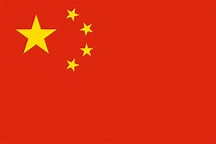China’s policy towards India is heavily influenced by US-India relations
China’s approach to its relations with India has been that of an orchestra maestro, upping and lowering the ante according to the script. India, on its part, is still exploring the dragon’s mind.
The rivalry is played out on the LAC and in South Asia’s geopolitics. Although the border agreements of 1993, 1996, 2005, 2012 and 2013 lowered tension along the LAC, the core contentious issue of boundary dispute was left untouched by the agreements. Hopes of any dispute resolution vanished with the 2013 Depsang standoff. The 2013 incident was followed by standoffs in Demchok in 2014, Depsang in 2015, Doklam in 2017 and the Galwan flareup in 2020. A clear Chinese pattern to establish a new normal was evident in each of these incursions.
China’s increasing footprints in South Asia also casts a long shadow on the India-China bilateral relations. China has been selectively pushing its borders with Bhutan and Nepal, causing major security concerns for India. It has also established an economic stranglehold on countries in the region. Green shoots of democracy in Myanmar have been ruthlessly rooted out.
It is obvious that India’s growing stature, economic growth and increasing proximity to the US are all causing concerns to China. China’s policy towards India is heavily influenced by US-India relations. While India may not structure its China policy based on the US-India or US-China relations, the same is not true of China. As far as China is concerned, the US is a major factor in China’s India policy.
Both China and India have competing interests in the Indo-Pacific, Indian Ocean, and South Asia.
India’s stance on the Ukraine war and refusal to abide by the US-Western diktats to boycott oil trade with Russia and its refusal to condemn Russia as the aggressor gave sufficient proof of how much India values its strategic autonomy. India has a proven track record of not becoming an ally of any power bloc in the global power play. A resurgent India now takes issue-based policy decisions as dictated by its economic and security needs and asserts its position. China seems to draw no comfort from this display of strategic autonomy by India and considers India-US ties inimical to China.
Despite the adversarial relationship, during 2020-2021 and 2021-2022, China’s share in India’s imports was about 15 to 17 per cent. If only non-oil imports are considered, this jumps to almost 25 per cent. During 2020-21, India’s exports to China amounted to $21.2 billion. The trade deficit in 2021-2022 was $73.3 billion in China’s favour and crossed a whopping $100 billion for 2022-2023. India must focus on measures to correct this trade imbalance and facilitate the development of alternate global supply chains. All in all, China is a big beneficiary of the steadily growing Indian market.
The US-China relations have hit a zone of trust deficiency. The rivalry between the two is actively playing out in the economic, trade, technological and geopolitical arenas. The tussle appears intense in trade relations, South China sea, Taiwan, Indo-Pacific.
China’s bilateral trade with the US is about $690 billion, of which the US imports from China account for $564 billion. China is also the second largest holder of the US treasury bonds—close to 12 per cent of it, worth $867 billion. Japan tops the list with $1,067 billion and India ranks 10th with $224 billion. Like the US, China is also grappling with economic headwinds and a huge erosion of global confidence in its reliability as a trade partner. Li Yuan of The New York Times, in a recent article, recalled former premier Wen Jiabao’s statement “in the face of economic difficulties, confidence is more precious than gold,” while reiterating China’s compelling need to restore global confidence and focus on economic issues.
As far as the world is concerned, China is the epicentre of the global supply chain today. In fact, China’s major trading partners are the US and Western countries. Decoupling from China will be a long and painful process. So, while trade disputes, allegations of technology theft, spying, attempts to deny high-end technology, Taiwan dispute etc. will keep festering between US and China, their economic interdependency is likely to prevent a conflict situation. So, despite the rivalry, China and US will continue seeking areas of cooperation.
Visits by Antony Blinken and Janet Yellen which were preceded by visits of Tim Cook, Bill Gates and Elon Musk, were all part of such efforts. Janet Yellan told the Chinese during her visit that decoupling the two biggest economies of the world is impossible. The US is also putting out regular feelers to China to temper tensions and settle into a competitive rivalry rather than an adversarial rivalry. Statements like “US is not seeking a winner-take-all” competition and Treasury Chief Yellan urging the US and China to work together are clear examples. John Kerry’s recent China visit to promote climate cooperation had more to do with promoting working relations between the two than tackling climate issues. Even Henry Kissinger, the centenarian ‘China friend’, undertook a trip to Beijing to meet Xi.
The US-China bilateral relations are bound to follow a path of its own, based on the national interests, objectives and priorities of the two countries. Concerns of other countries will have no significant impact on its trajectory. India’s security concerns about China and any turbulence in India-China relations will in no way impact the US-China relations. It is an entirely different matter that where Indian interests align with that of the US—Indo-Pacific and Indian Ocean among others—cooperation and support will be forthcoming. But where there is no US interest involved—like the India-China border dispute—it is unrealistic to expect the US to mould their China policy to serve India’s purpose.
It is time for India to evolve a clear policy to deal with China, independent of India-US relationship. China must be prevented from arm-twisting India with the aim of influencing India-US ties. India has, for decades, demonstrated the ability to balance closer relations with USSR/Russia without unduly impacting India-US relations. India will do well to pull a leaf out of this in the context of its relations with the US and China.
India’s relations with neighbouring countries, especially Nepal, Bhutan, Myanmar and Bangladesh, are critical for countering the China threat. India needs to be far more generous to its smaller neighbours and facilitate them deriving advantages and huge benefits from their bilateral trade with India. Building a high degree of economic interdependency with these countries will contribute immensely towards India’s national security and countering China. This issue merits far greater attention.
The hard truth is that there has been absolutely no improvement in India-China relations during the past seven decades. The beaten path has failed to yield any results. It is in India’s interest to change track, take a long-term view and structure a well-thought-out way forward rather than remain helpless and perpetually stuck in a reactionary mode. The pursuit of peace with India must become beneficial and attractive for China. For that to happen, any military option against India must be rendered unattractive by making the possible outcome of military options uncertain. This can be achieved only by building and maintaining a credible military deterrence capability in the mountains and the Indian Ocean. While in the maritime domain, the congruence of interest of other major players in the Indo-Pacific works in India’s favour, along the land borders in the mountains, India must be capable of tackling the military challenges all by itself. There is also an urgent need to build structures and capabilities to counter Chinese grey zone threats.
Areas of economic cooperation where the interests of both countries can align offers options to build confidence and find a way forward. In this regard, Afghanistan and Central Asian countries offer great scope for India and China to undertake mutually beneficial joint ventures in areas like mining and mineral industries. Central Asian region also offers tremendous potential for India-China cooperation and joint economic activities under the aegis of BRICS.
When it comes to resolving the core issue of disputes along LAC, no mutually acceptable solution is visible on the horizon. Both sides persist with their respective, inflexible positions. Any dilution will be perceived as a loss of face domestically and internationally for both sides and this status is unlikely to change. In fact, the stakes will only increase further, with improving communication and accessibility in the mountains. The only way forward may be to seek unconventional, innovative, mutually beneficial options not tried out before. One such option is to explore the possibility of accepting joint ownership of some of the disputed segments along the borders. Suitable joint mechanisms could be evolved to govern and develop these areas jointly. Most of these areas offer immense scope for international tourism, adventure sports, mineral exploitation, thermal energy etc.
Imagine the outcome, if the two civilisational Asian giants come together. It will indeed usher in the Asian Century!
Source:
https://www.theweek.in/news/india/2023/08/07/india-china-relations-looking-ahead.html








